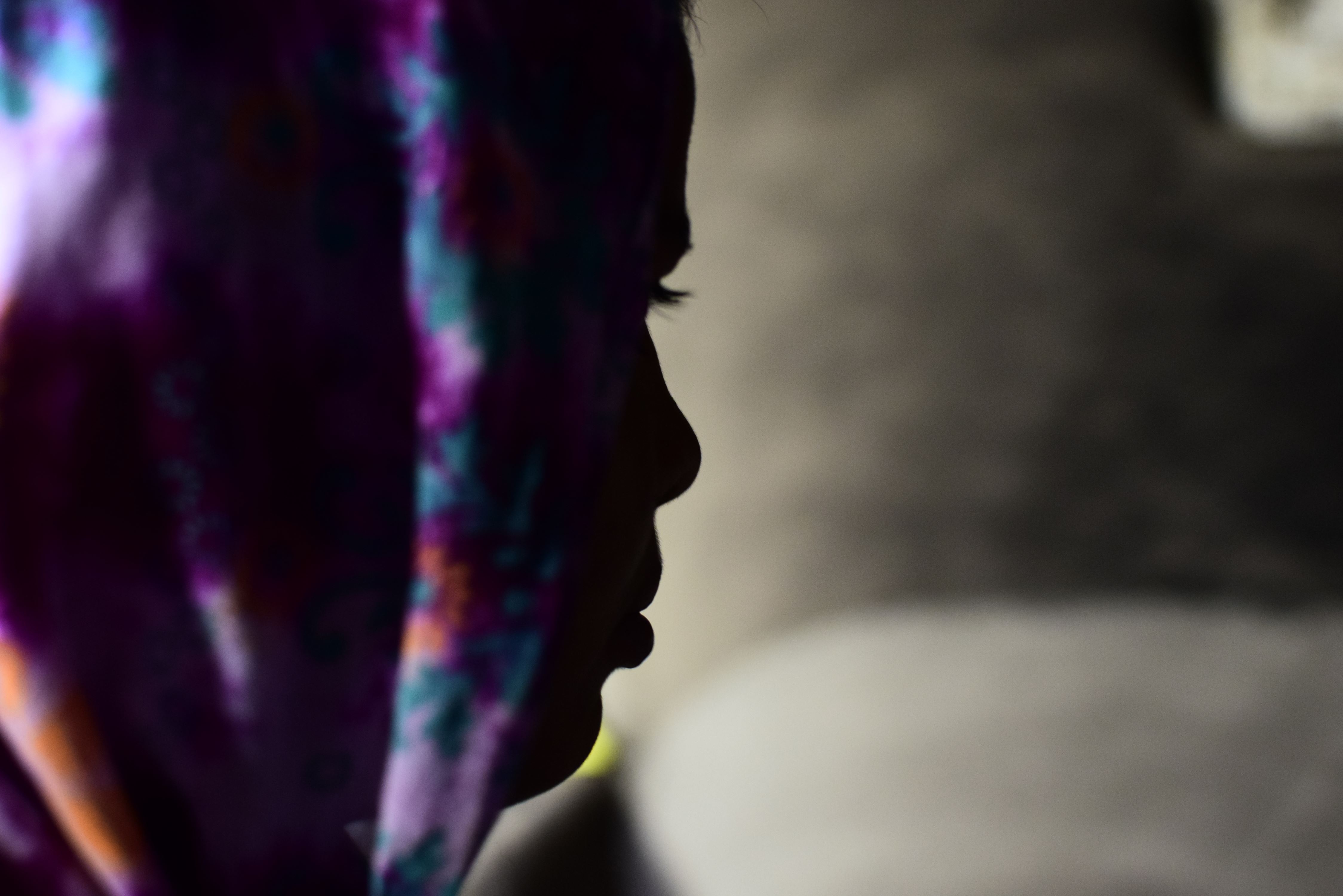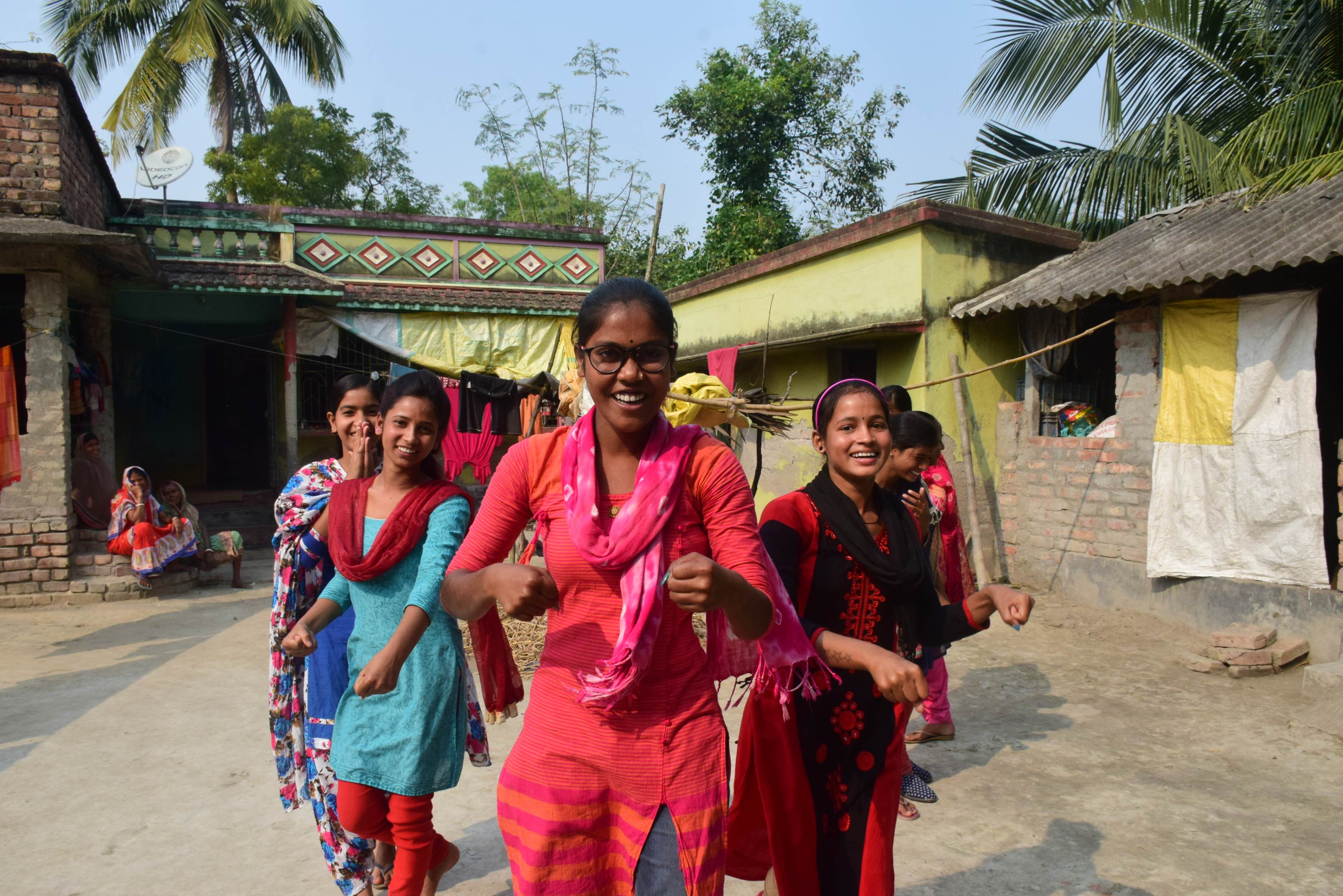
Action
182 children take actions to help end violence against children


Global issue but personal tragedy for so many. Thankfully, Samira escaped.
“In the morning, there would be 12-14 men and, in the night, around 15 men... After working the whole day, we would be taken to a building in the middle of nowhere to get rest. There was only one window in the entire room. All the girls were kept there. But because the place was so secluded, even if we would scream or shout for help, no one could hear us.’’
That’s part of Samira’s* story.
She was trafficked as a teenager and endured a traumatic ordeal which will live with her forever. See her full story.
We do. And yet, there are so many girls facing fear this second. Girls like Samira.
Child trafficking is a form of modern-day slavery. Children are trafficked for purposes such as domestic labour, armed groups, criminal activity, and even adoption. Some are made to have sex with multiple people every day, like Samira. Even if they escape, the physical and emotional trauma has a long-term impact – the fear, abuse and stigma that children can experience may make it difficult for them to reintegrate in society and rebuild their lives.
It’s hard to understand how it can happen. Humanitarian crises, such as violent conflicts and natural disasters, sometimes result in children being separated from their families, making them easier targets for traffickers.
In other instances, traffickers will prey on parents’ fears, giving false promises of a brighter future for their children. Parents may hand over their children not just for money but in the misguided hope that their children will escape poverty and have a better life, with more opportunities.
Trafficking is lucrative. According to the International Labour Organisation, it is the fastest growing and second-largest criminal industry in the world, after drug trafficking. Trafficking in people generates over US$150 billion a year.
We’re helping protect children, ensuring that communities are actively working to identify and support children in need; advocating for children’s rights; and providing for immediate needs, such as emergency shelter and essential care.
Last year, half a million people in our sponsorship communities learnt how to access child protection services and information.
Samira* lives in a remote village in West Bengal. Her oldest sister and her husband look after the family by doing odd jobs and tending to their field.
Samira loved going to school but when she was 14 her family could no longer afford that luxury – they needed her to find work. They sent her to live and work with her older sisters in Mumbai. With a heavy heart, Samira made the 1,200 mile journey from her village, leaving behind her close family and friends, to work in Mumbai – the city of dreams.
One day, Samira’s brother-in-law said he had found her a “good opportunity” – before handing her over to traffickers. Just like that, Samira was pushed into the world of commercial sexual exploitation in the brothels of Mumbai.
The three months she spent in captivity were brutal.
"I would only be given food if I worked … They would beat me with belts – the brothel owners and even customers – when I refused to work. I was forced to drink beer and alcohol. They burnt my hands with cigarette butts… I cried a lot and begged them to let me go home… I overheard my owner say that it was my brother-in-law who sold me to them."
With no one to talk to, owing to a language barrier, Samira cried. Mumbai, the city of dreams, was her worst nightmare.
Samira remembers the brothel. The girls’ “caretakers” would often take advantage of them, and never gave them a single rupee for their work. Their earnings went directly to the brothel owners.
“What I went through, I would not want any other girl or woman to go through… I suffered a lot… It was a very, very tough time… In the morning, there would be 12-14 men and, in the night, around 15 men... After working the whole day, we would be taken to a building in the middle of nowhere to get rest. There was only one window in the entire room. All the girls were kept there. But because the place was so secluded, even if we would scream or shout for help, no one could hear us.
“There were young girls as well, from ten to 12 years of age. Their hands and legs were tied while they were made to do this work…We were not allowed to talk to each other and had to keep to ourselves. They [the brothel owners] were scared and thought we would make a plan to run away.”
Seclusion, close surveillance, violence and threats are some of the coercive techniques traffickers use to keep their victims from running away. Many girls who are trafficked come from different parts of the country and do not speak the local language. This makes it even more difficult to plan an escape or ask a customer for help. Samira had no one to turn to.
Until the day she finally broke free from her captives.
Samira and a few girls were taken to a hotel for work. There was a police raid. Some girls hid from the police because they didn’t want to get caught but Samira saw this as her opportunity to escape. She remembered:
“I did not hide but I ran to the police. I told them to help me.’’
Her brother-in-law and brothel keeper were also present at the hotel and were taken into custody and eventually went to prison.
Following her rescue, Samira spent some months in two different shelter homes in Mumbai and a shelter home in Kolkata.
The shelter kept Samira busy offering her opportunities to learn a few skills and, more importantly, time to start the healing process. During that time, her oldest sister and brother-in-law applied for her guardianship and finally she could go back home.
Returning to her village was overwhelming for Samira.
“When I first came back, I only stayed at home. The villagers would laugh and poke fun at me. I was ashamed to go out. My biggest fear when coming back home was that my dada [sister’s husband] would beat me. But he gave me a big hug.”
The family tried to distract her and not to speak about her past life. They cut off all ties with their younger sister and brother-in-law.
Survivors of trafficking often live with the physical and emotional scars left behind by the violence they faced in captivity. From post-traumatic stress disorder, anxiety, depression, panic disorder to Stockholm syndrome and struggles with substance abuse, survivors face an array of issues that need proper medical and psychological care.
Unfortunately, many survivors do not have access to these support services because they not only live in remote locations, but also live in difficult economic situations. Poverty, fear, self-blame, a desire to move on and not ruin future marriage prospects, social ostracisation could be a few reasons families are hesitant to seek help.
Samira shared,
“There was no one to talk to or listen to my pain. Everyone says ‘forget about what happened and move on’, including my guardians…People just laugh on the outside. They don’t know what is going on through my mind or what I am feeling.”
Samira met a caseworker from World Vision. Mousumi works with our Child Sex Trafficking Survivor Support Programme, playing an instrumental role in providing mental health support to young survivors to deal with their trauma, manage stigma and encourage them to study or take up a vocational course.
Mousumi said,
“The day I met Samira I could tell that she needed to talk to someone. She was very quiet at first but then opened up to me. She has experienced a lot of pain because of her traffickers.”
After meeting her guardians, Mousumi helped them understand the work of the Project for Survivors of Trafficking. She then enrolled Samira in the survivors’ cohort that has child survivors of sex trafficking. Samira also said she would attend the survivor’s meeting conducted by World Vision.
Mousumi offered several vocational skills courses and Samira chose ones on hotel management and being a beautician.
Samira said,
“I wanted to study at one point in time but because of our financial condition I could not. I do not have any other dream now. I do know that I want to work and stand on my own two feet. So, I want to do some residential course where I can live and learn.”
Right now, thousands of girls like Samira urgently need sponsors so they can break free and build a fearless future.
Join our movement to sponsor 500 girls by October 11 - International Day of the Girl.
Through Child Sponsorship, you can contribute to a generation of fearless girls. When you sponsor a girl, you can help set her free – of trafficking, of child marriage, of child labour… of fear. Free to learn, grow and be the fearless girl she’s born to be.
* names and some details changed to protect identity

